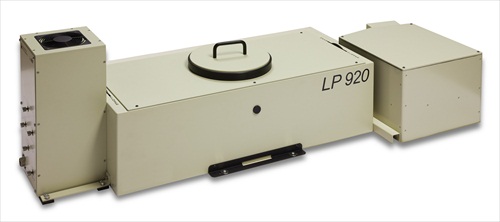Members Login

Channels
Special Offers & Promotions
Flash photolysis spectrometer helps with light harvesting research
Researchers at the University of Connecticut have been using the LP920 flash photolysis spectrometer from Edinburgh Instruments as part of their research into plant light harvesting complexes (1)
A paper has been published (2) with collaborators at Kwansei Gakuin University examining the efficiency of variants of the Peridinin-Chlorophyll a-Protein (PCP) complex in providing photoprotection from singlet oxygen formation. PCP’s highly effective protective capacity against these photodynamic reactions is extremely important since singlet oxygen can directly provoke cellular damage in plants by rapidly oxidizing cellular components.
The LP920 was used to record transient triplet-minus-singlet absorption spectra of chlorophyll a with different peridinin molecular analogs in polar and non-polar solvents, allowing the dynamics of the reactions to be investigated. Although the results showed that the spectral bands are shifted depending on the molecular analog used, the dynamics of triplet state decay remain very similar for each analog meaning that there is no marked difference between them in terms of their ability to protect against singlet oxygen formation.
The LP920 is a computer-controlled, fully automated flash photolysis spectrometer, equipped with a large sample chamber to house a variety of sample holders. Excitation pulses at 660 -670 nm for these experiments were provided using an Nd:YAG-pumped laser light source. A pulsed, high-intensity 450 W Xenon lamp was used for the transient absorption spectral measurements.
For more about Edinburgh Instruments visit www.edinst.com
1 Light harvesting complexes consist of proteins and photosynthetic pigments that surround a photosynthetic reaction centre and collect more of the incoming light than would be captured by this centre alone.
2 S. Kaligotla, S. Doyle, D. M. Niedzwiedzki, S. Hasegawa, T. Kajikawa, S. Katsumura & H. A. Frank, Photosynth. Res (2010) 103; 167-174
Media Partners



